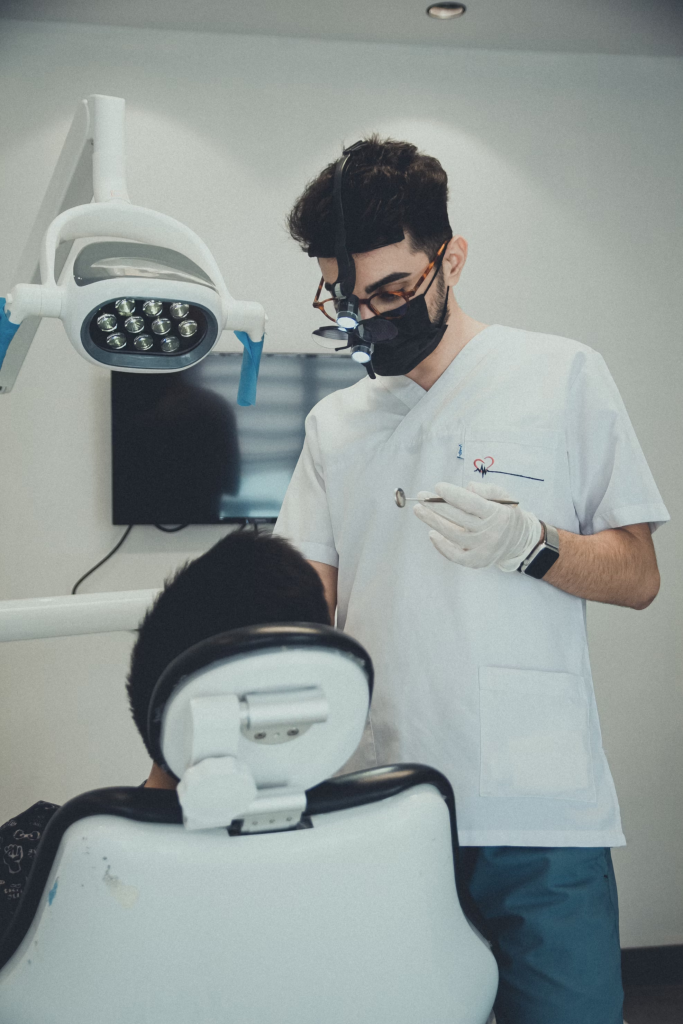A bright, white smile is often associated with health, vitality, and attractiveness. Teeth whitening has become one of the most sought-after cosmetic dental procedures in Australia as people strive to achieve a radiant smile.

While there are many teeth-whitening options available, it’s essential to understand which methods are most effective, safe, and suitable for your individual needs. Whether you’re looking for professional treatments or at-home solutions, this comprehensive guide will explore the most effective ways to whiten your teeth and maintain a bright smile.
Click Click To Investigate For More Details
The Most Effective Ways To Whiten Your Teeth: A Comprehensive Guide
Professional In-Office Teeth Whitening
When it comes to quick and noticeable results, professional teeth whitening treatments performed by a dentist are generally considered the most effective. These treatments are stronger and more targeted than over-the-counter solutions, and a dentist can ensure that the process is done safely and effectively.
In-Office Teeth Whitening: The Process
Professional whitening typically involves a gel containing a high concentration of hydrogen peroxide or carbamide peroxide, which is applied directly to the teeth. The dentist may use a special light or laser to accelerate the whitening process, although studies have shown that light activation doesn’t significantly improve results compared to non-light treatments.
The procedure generally takes around 60 to 90 minutes and can lighten teeth by several shades in just one session. Depending on the severity of your tooth discolouration, you may require multiple treatments to achieve your desired results.
Pros of Professional Whitening
- Immediate Results: In-office treatments provide dramatic whitening results in just one visit.
- Customised Treatment: A dentist can tailor the treatment to suit your specific needs, ensuring optimal and safe results.
- Safe and Monitored: Under the supervision of a dental professional, the risk of gum irritation or over-whitening is minimised.
Cons of Professional Whitening
- Cost: In-office whitening is generally more expensive than at-home options, with costs ranging from $400 to $1,000 depending on the clinic and the number of sessions required.
- Temporary Sensitivity: Some people experience tooth sensitivity following professional whitening, though this usually subsides within a few days.
Take-Home Teeth Whitening Kits
If professional whitening is not within your budget or schedule, many dentists offer custom take-home whitening kits that deliver effective results. These kits contain a lower concentration of bleaching agents than in-office treatments but can still significantly lighten teeth over time.
Take-Home Whitening Kit Process
The dentist will first take impressions of your teeth to create custom trays that fit your mouth precisely. You will then be provided with a whitening gel containing carbamide peroxide or hydrogen peroxide.
The gel is applied to the trays, which you wear for a specified period, typically for 30 minutes to an hour, once or twice a day for a few weeks. The whitening process is gradual, but results are often noticeable within a few days to a week.
Pros of Take-Home Kits
- Cost-Effective: Take-home kits are less expensive than in-office whitening treatments, usually costing between $300 and $600.
- Convenience: You can whiten your teeth in the comfort of your own home, and the treatment can be done on your schedule.
- Custom Fit: Custom trays ensure that the whitening gel is applied evenly and only to your teeth, reducing the risk of irritation.
Cons of Take-Home Kits
- Longer Timeframe: Unlike in-office treatments, at-home kits take several weeks to show noticeable results.
- Risk of Overuse: If you don’t follow the instructions carefully, there is a risk of using the product too often or leaving it on for too long, which can lead to tooth sensitivity or gum irritation.
Over-The-Counter Whitening Products
For those seeking an affordable and accessible solution, over-the-counter teeth-whitening products can be a good option. These include whitening toothpaste, whitening strips, and mouthwash, all of which are widely available in supermarkets and pharmacies across Australia.
Whitening Toothpaste
Whitening toothpastes typically contain mild abrasives or chemicals that help remove surface stains and prevent new stains from forming. They are not designed to change the intrinsic colour of your teeth but can help improve the appearance of extrinsic stains.
Whitening Strips
Whitening strips are thin, flexible strips coated with a whitening gel. They are applied directly to the teeth and left on for 20 to 30 minutes per day, usually for a period of one to two weeks. The gel in these strips contains peroxide, which helps break down stains on the teeth.
Whitening Mouthwashes
Whitening mouthwashes contain bleaching agents and are designed to freshen breath while gradually lightening the teeth. They are used by swishing the solution around the mouth for 30 seconds to a minute daily.
Pros of Over-the-Counter Products
- Affordable: Over-the-counter products are significantly cheaper than professional treatments, with whitening toothpaste costing as little as $5 to $10 and whitening strips costing between $20 and $50.
- Easy to Use: These products are convenient and easy to incorporate into your daily oral hygiene routine.
- Readily Available: They are available at most supermarkets and pharmacies, making them easily accessible.
Cons of Over-the-Counter Products
- Limited Results: Over-the-counter products are generally not as effective as professional treatments and may only provide minimal whitening for surface stains.
- Time-Consuming: Some of these products, such as whitening strips, can take several weeks to show results.
- Potential Sensitivity: Excessive use of whitening toothpastes or strips can lead to tooth sensitivity or gum irritation, especially if they are used incorrectly.
Natural Whitening Methods
Some individuals prefer to avoid chemical treatments and turn to natural remedies for whitening their teeth. While these methods may not offer the same dramatic results as professional treatments, they can help maintain a bright smile and reduce surface stains.
Baking Soda
Baking soda is a mild abrasive that can help scrub away surface stains from the teeth. Many commercial whitening toothpastes contain baking soda, but you can also make a paste by mixing it with water and brushing your teeth with it.
Activated Charcoal
Activated charcoal is thought to whiten teeth by binding to stains and removing them. While there is limited scientific evidence to support its effectiveness, many people use it as a natural alternative to chemical teeth-whitening products.
Coconut Oil Pulling
Oil pulling is an ancient practice that involves swishing oil (usually coconut oil) around in the mouth for 10 to 15 minutes to remove bacteria and improve oral hygiene. Some studies suggest that oil pulling can help reduce plaque and promote oral health, which may indirectly contribute to a brighter smile.
Pros of Natural Whitening Methods
- Low Cost: Natural remedies are generally affordable and easy to access.
- Non-toxic: These methods involve natural substances that are typically free from harsh chemicals.
- Holistic Approach: Many people appreciate the natural approach to oral care and choose these methods to maintain overall oral hygiene.
Cons of Natural Whitening Methods
- Limited Effectiveness: Natural remedies are often not as effective as professional treatments in terms of dramatically whitening teeth.
- Time-Consuming: These methods typically take longer to show any results and may require more frequent use.
- Potential for Damage: Overuse of abrasives like baking soda can wear down tooth enamel over time, leading to increased sensitivity and tooth damage.
Maintaining White Teeth
Once you’ve achieved your desired level of whiteness, it’s essential to maintain your bright smile. Here are some tips for keeping your teeth white:
- Brush and Floss Regularly: Maintaining a regular oral hygiene routine helps prevent the buildup of plaque and stains.
- Limit Stain-Causing Foods and Drinks: Be mindful of foods and drinks that can stain your teeth, such as coffee, tea, red wine, and berries. If you do consume them, rinse your mouth with water afterwards.
- Avoid Smoking: Smoking not only discolours your teeth but also increases the risk of gum disease and other oral health issues.
- Touch-Up Whitening Treatments: Depending on the method used, you may need to do periodic touch-up treatments to maintain your results.
Conclusion
Achieving a bright, white smile is a goal for many, and the best way to whiten your teeth will depend on your specific needs, budget, and preferences. Professional in-office treatments provide the fastest and most dramatic results, while take-home kits offer a more convenient and cost-effective option. Over-the-counter products and natural remedies can also help improve the appearance of your teeth, but they may take longer and offer more limited results.
Regardless of the method you choose, it’s essential to follow proper oral hygiene practices and maintain your results by avoiding stain-causing foods and drinks, practising good brushing habits, and consulting with your dentist regularly. With the right approach, you can enjoy a brighter smile for years to come.
Frequently Ask Question
Can Teeth Whitening Remove All Types Of Stains?
Teeth whitening is most effective at removing stains caused by food, drinks, smoking, and aging. However, it may not be as effective on certain types of stains, such as those caused by medications (like tetracycline) or trauma to the teeth. For stains that do not respond well to whitening, cosmetic dental procedures like veneers or bonding may be a better option. Your dentist can assess the type of stains you have and recommend the best treatment for you.
Are There Any Natural Ways To Whiten Teeth?
Natural remedies, such as brushing with baking soda or using activated charcoal, are popular but often provide limited results. These methods can help remove surface stains, but they don’t contain bleaching agents that penetrate the tooth enamel to whiten the deeper layers. While these methods are generally safe when used occasionally, they should not replace professional treatments. It’s essential to consult your dentist before trying any natural whitening options to avoid potential harm to your teeth.
What Are The Risks Of Over-Whitening Your Teeth?
Over-whitening can lead to several issues, including tooth sensitivity, gum irritation, and enamel damage. Excessive bleaching can strip away the protective layer of enamel, making your teeth more vulnerable to decay and staining. It can also lead to uneven whitening, leaving some areas of your teeth lighter than others. To avoid these risks, it’s important to follow the recommended treatment plan and consult your dentist about the best whitening options for your teeth.
